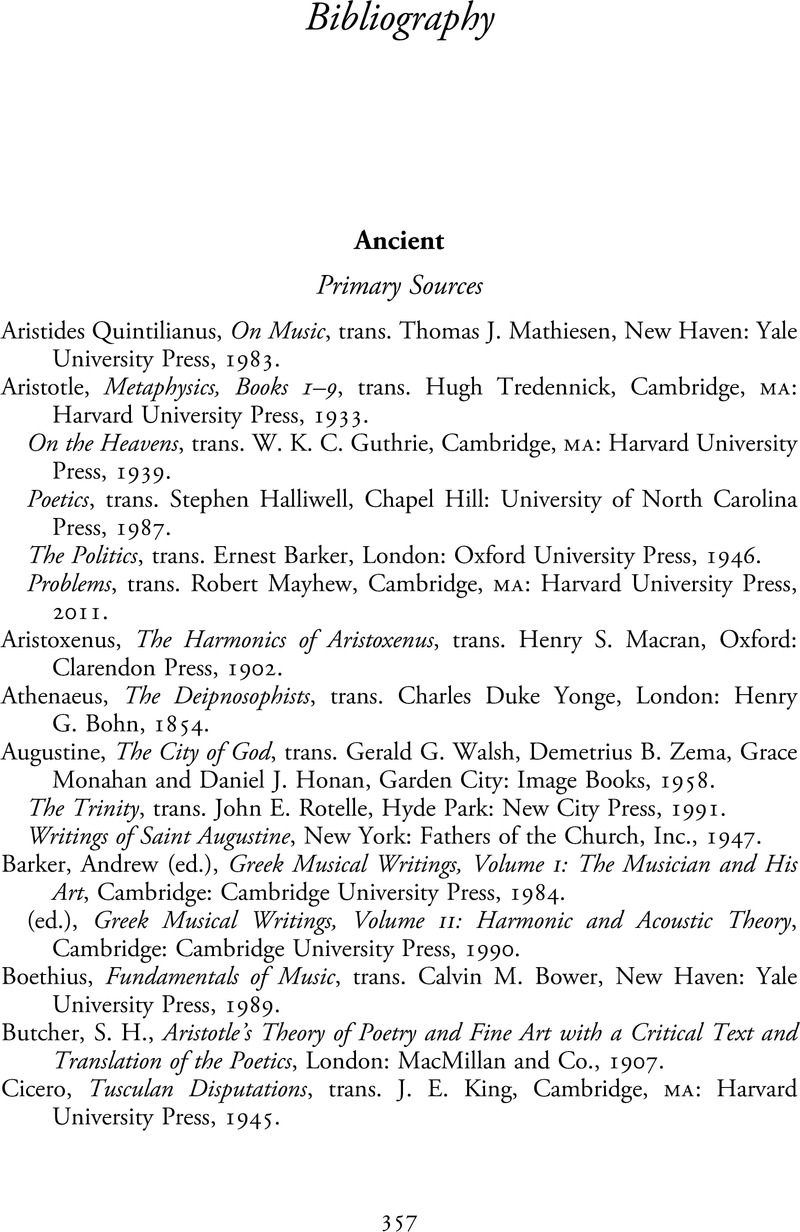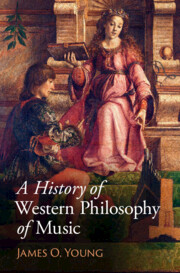Book contents
- A History of Western Philosophy of Music
- A History of Western Philosophy of Music
- Copyright page
- Dedication
- Epigraph
- Contents
- Preface
- Chapter 1 The Ancient World
- Chapter 2 The Middle Ages
- Chapter 3 The Early Modern Period: 1500–1800
- Chapter 4 The Modern Period: 1800–1950
- Chapter 5 The Contemporary Period
- Envoi
- Bibliography
- Index
- References
Bibliography
Published online by Cambridge University Press: 18 January 2023
- A History of Western Philosophy of Music
- A History of Western Philosophy of Music
- Copyright page
- Dedication
- Epigraph
- Contents
- Preface
- Chapter 1 The Ancient World
- Chapter 2 The Middle Ages
- Chapter 3 The Early Modern Period: 1500–1800
- Chapter 4 The Modern Period: 1800–1950
- Chapter 5 The Contemporary Period
- Envoi
- Bibliography
- Index
- References
Summary

- Type
- Chapter
- Information
- A History of Western Philosophy of Music , pp. 357 - 379Publisher: Cambridge University PressPrint publication year: 2023



